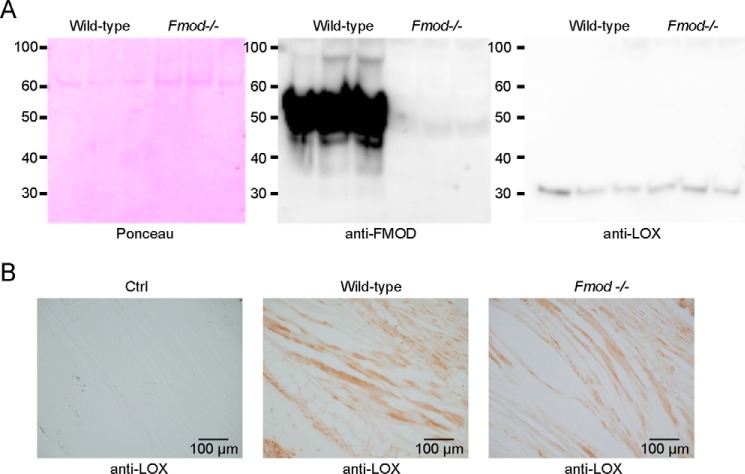FIGURE 3.
Lysyl oxidase quantity and distribution in Fmod−/− mice. A, guanidine-extracted proteins from wild-type and Fmod−/− tail tendons were precipitated with ethanol, run on SDS-PAGE, transferred to a nitrocellulose membrane, and stained with Ponceau or detected with anti-FMOD or anti-LOX antibodies (n = 3 biological replicates). B, immunodetection of LOX was performed on formalin-fixed tail tendons of wild-type and Fmod−/− mice. The sections were deparaffinized, hydrated, and processed for antigen retrieval and peroxidase quenching before blocking with 10% goat serum and incubating with rabbit anti-LOX (or isotype control (Ctrl) antibody) followed by HRP-conjugated anti-rabbit. The staining was developed using diaminobenzamidine peroxidase.

